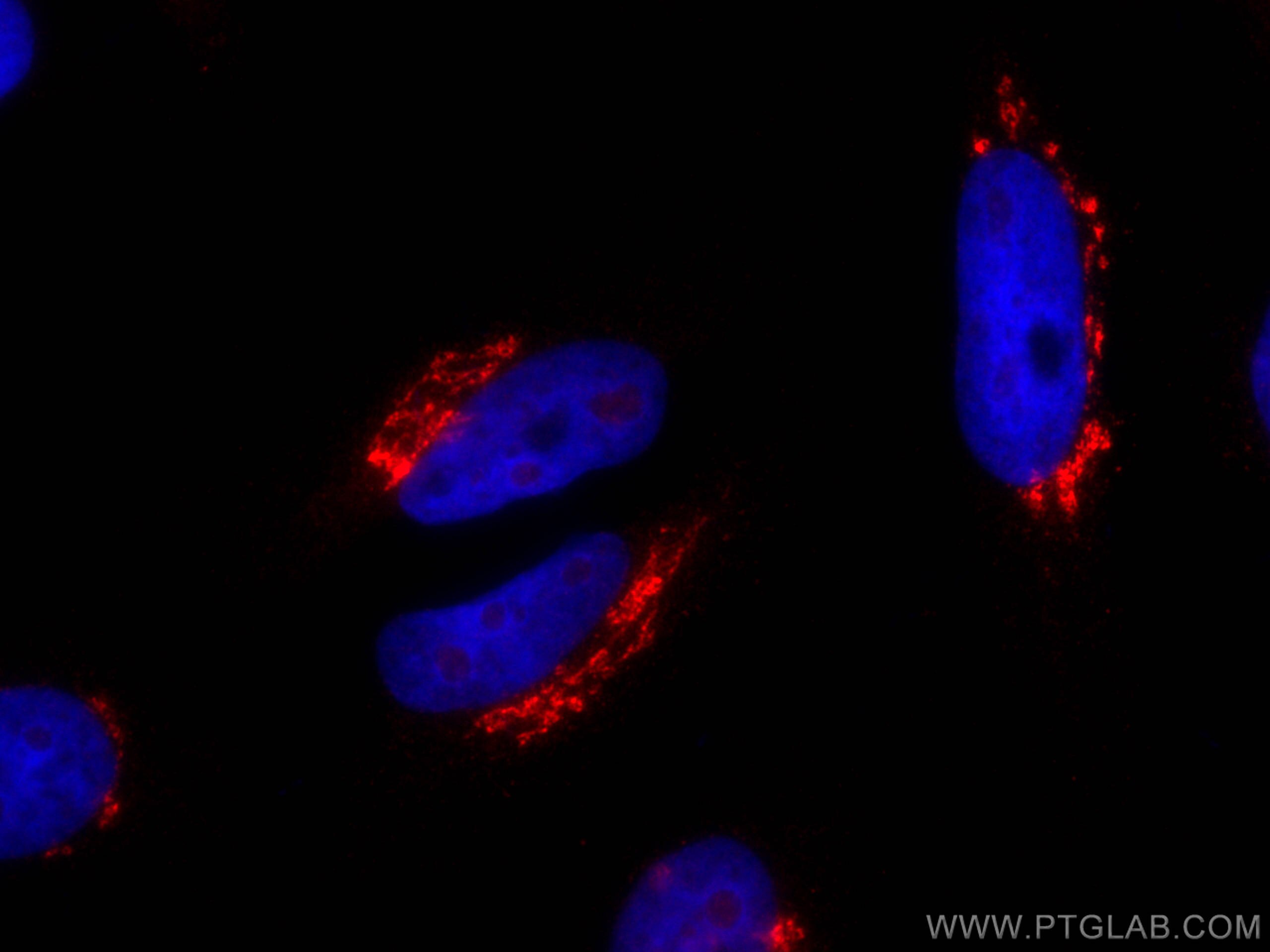TGN46 Polyklonaler Antikörper
TGN46 Polyklonal Antikörper für IF
Wirt / Isotyp
Kaninchen / IgG
Getestete Reaktivität
human
Anwendung
IF
Konjugation
CoraLite®594 Fluorescent Dye
Kat-Nr. : CL594-13573
Synonyme
Galerie der Validierungsdaten
Geprüfte Anwendungen
| Erfolgreiche Detektion in IF | HeLa-Zellen |
Empfohlene Verdünnung
| Anwendung | Verdünnung |
|---|---|
| Immunfluoreszenz (IF) | IF : 1:400-1:1600 |
| It is recommended that this reagent should be titrated in each testing system to obtain optimal results. | |
| Sample-dependent, check data in validation data gallery | |
Produktinformation
CL594-13573 bindet in IF TGN46 und zeigt Reaktivität mit human
| Getestete Reaktivität | human |
| Wirt / Isotyp | Kaninchen / IgG |
| Klonalität | Polyklonal |
| Typ | Antikörper |
| Immunogen | TGN46 fusion protein Ag4470 |
| Vollständiger Name | trans-golgi network protein 2 |
| Berechnetes Molekulargewicht | 447 aa, 47 kDa |
| Beobachtetes Molekulargewicht | 90-100 kDa |
| GenBank-Zugangsnummer | BC028219 |
| Gene symbol | TGOLN2 |
| Gene ID (NCBI) | 10618 |
| Konjugation | CoraLite®594 Fluorescent Dye |
| Excitation/Emission maxima wavelengths | 588 nm / 604 nm |
| Form | Liquid |
| Reinigungsmethode | Antigen-Affinitätsreinigung |
| Lagerungspuffer | BS mit 50% Glyzerin, 0,05% Proclin300, 0,5% BSA, pH 7,3. |
| Lagerungsbedingungen | Bei -20°C lagern. Vor Licht schützen. Nach dem Versand ein Jahr stabil. Aliquotieren ist bei -20oC Lagerung nicht notwendig. 20ul Größen enthalten 0,1% BSA. |
Hintergrundinformationen
TGN46 (TGOLN2), the human homologue of rat Tgn38, is a transmembrane glycoprotein predominantly localized to the TGN (trans-Golgi network). TGN is a major secretory pathway sorting station for proteins and lipids. TGN46 may be involved in regulating membrane traffic to and from TGN. Alternatively spliced transcript variants encode different TGN46 isoforms. TGN46 has an apparent molecular mass of 100-150 kDa, suggesting extensive O- and N-glycosylations.
Protokolle
| Produktspezifische Protokolle | |
|---|---|
| IF protocol for CL594 TGN46 antibody CL594-13573 | Protokoll herunterladen |
| Standard-Protokolle | |
|---|---|
| Klicken Sie hier, um unsere Standardprotokolle anzuzeigen |


